Originally published 6 September 2016 | Updated 16 February 2022
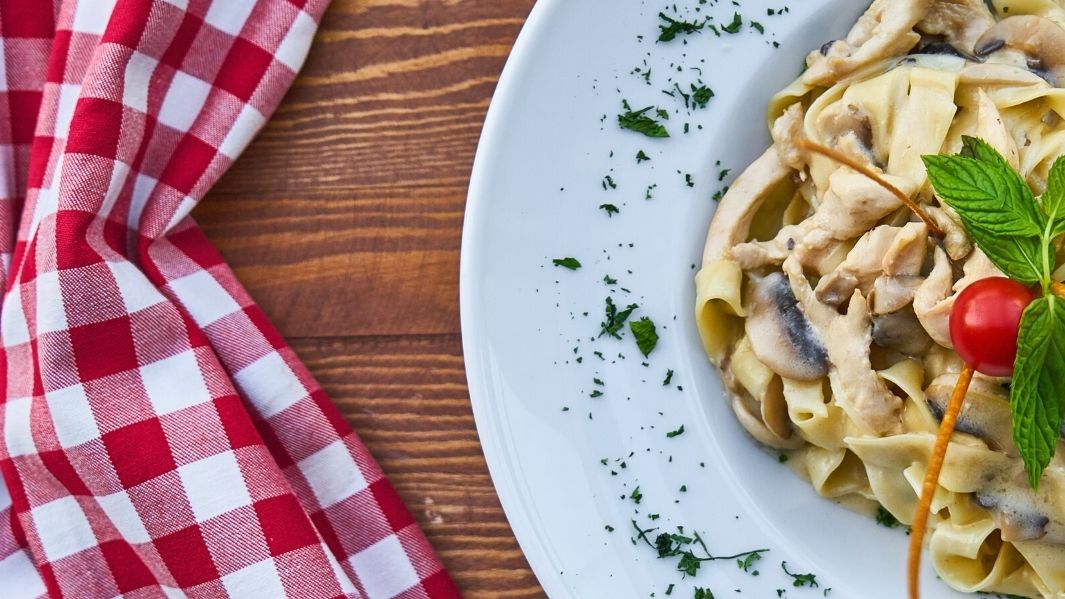
Italian food is one of the most popular cuisines in the world, with dishes like pizza and pasta served far and wide. However, whilst a number of our favourite “Italian” dishes still have their roots in Italy, many of them have been modified over the years as they’ve become more popular. In fact, it may surprise you to know that many of the dishes that we might consider as typically “Italian” aren’t actually Italian at all.
Food is such a big part of Italy’s culture, which means that Italians can be very strict about how it’s prepared and cooked. What shape of pasta goes with a particular sauce, when to drink certain types of coffee, and which herbs or other ingredients that must or must not be added to certain dishes are all considered matters of great importance. But as always happens with immigration, dishes change when they get to another country, adapting to the tastes of the people who live there, and the ingredients available. So, many dishes you may have thought were classically Italian, are in fact adaptations, and are very hard to find in Italy itself.
If you want to learn to make authentic Italian dishes, why not join one of our online cooking classes? You’ll learn from our talented Italian chefs, and have fun with new friends at the same time! Below we’ve looked further at some classic examples of “Italian” dishes that aren’t actually Italian! Some of them may surprise you…
1. Spaghetti Bolognese
Head to Bologna, and you won’t find spaghetti served with Bolognese sauce, only tagliatelle. Emilia Romagna, where Bologna is the capital, serves “ragu alla Bolognese” – ‘ragu from Bologna’. The sauce is called ragu, not Bolognese. We’re really only just starting to use the word ragu in the UK to describe a meaty pasta sauce. Tagliatelle is used rather than spaghetti because it holds the meaty sauce better. Another big difference is that a true Bolognese ragu will be much meatier than the tomato-heavy sauces we serve in the UK; they’ll use just a little tomato paste and no chopped tomatoes at all. The authentic ragu recipe, documented by the Accademia Italiana della Cucina, and subsequently recorded by Bologna’s Chamber of Commerce, limits the ingredients to beef, pancetta, carrots, celery stalks, onions, tomato paste, white wine and milk.
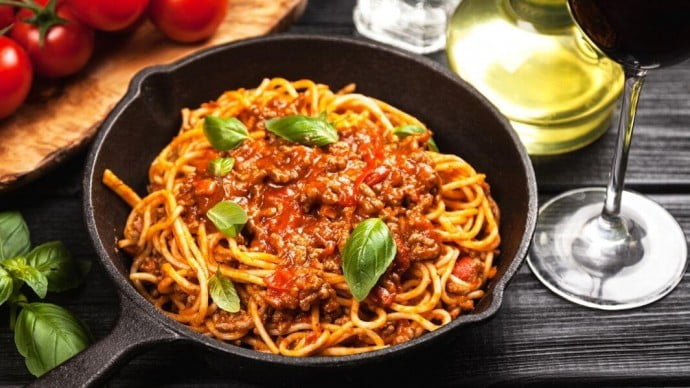
Can you believe this isn’t a traditional Italian dish?!
2. Spaghetti and Meatballs
Spaghetti, yes; meatballs, yes. Together, no way. Italian meatballs are called “polpette”. In most regions of Italy, polpette are fried and eaten as they are, mostly as a second course without sauce. Something which is sometimes done in Italy is inserting a small cube of fontina cheese into the middle of each polpetta before flouring and frying. This gives them an oozing centre when broken into. In southern Italy Italian meatloaf, or “polpettone”, which literally means ‘big meatball’, is often served with a tomato sauce that is prepared directly in the pan with some onions and diced tomatoes. In this variation, you baste the polpettone with the tomato sauce, but it is never served with spaghetti. Leftover polpettone can be used for sandwiches – or panini, as Italians call them. This is perhaps the origin of the American ‘meatball sub’.
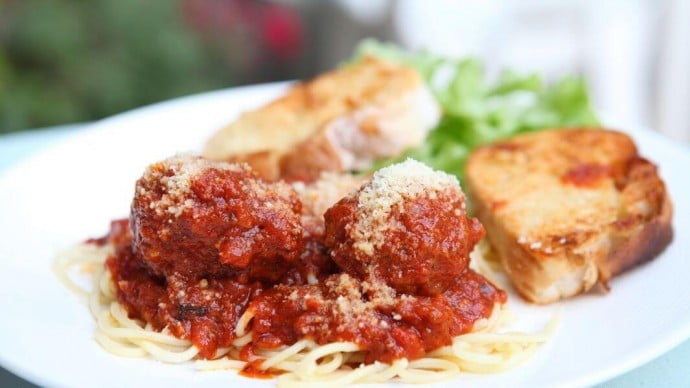
Did you know it’s called polpettone in Italian?
3. Garlic Bread
The Italians do eat garlic rubbed on toasted bread – with olive oil, not butter – and call it bruschetta. But they will toast an Italian bread such as ciabatta, not a French baguette, as has become popular in the UK and America. And you definitely won’t find it served with pizza or pasta – it will be given as an antipasti. The most common bruschetta is served with freshly chopped tomatoes and a sprinkling of salt and a drizzle of good olive oil: bruschetta al pomodoro.
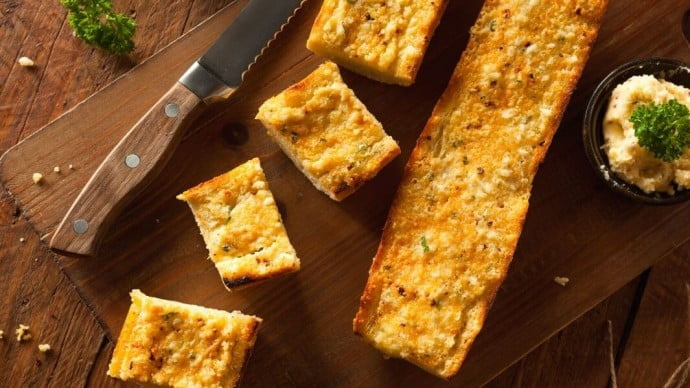
No garlic bread with pizza or pasta?!
4. Pepperoni
In America and the UK, we often top our pizzas with pepperoni. But in Italy, “peperone” means peppers – as in bell peppers. You’re more likely to get a pizza topped with “prosciutto crudo” than a spicy salami. It’s said that the meaning of the Italian word “peperone” got confused when Italians began to immigrate to America, and started to mean meat rather than peppers! Despite this, it is occasionally served in some Italian restaurants, but it will always be called spiced salami not pepperoni. Pepperoni is an American-invented word.
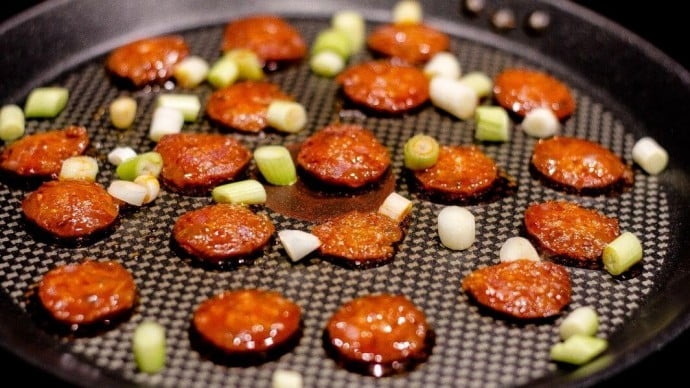
Spiced salami is definitely our favourite pizza topping!
5. Espresso
Of course, espresso is a drink in Italy, it’s just not usually called that – it’s simply un caffè. A double espresso is caffè doppio. The most common coffee is a single espresso shot – un caffè – served at drinking temperature and drunk standing up at the bar. While we’re on the subject, Italians only drink coffee with milk in the morning. Either cappuccino or one of the forms of caffé latte: caffè macchiato (espresso plus a dash of milk) or latte macchiato (hot milk with a dash of coffee).
Don’t simply ask for a latte, or you’ll get a glass of milk. And don’t order a vente anything if you’re a Starbucks fan, as it literally translates as ‘twenty’; nor a hazelnut-syrup soy milk frappuccino. The Italians keep things classic and simple – they won’t have an option of skimmed or full-fat milk, for example. If you really want to look like a local, order caffè corretto first thing in the morning, a pick-me-up espresso with a dash of grappa or other spirit.

Finally, no stress ordering a coffee! Thanks Italy for keeping it simple.
6. Chicken or Veal Parmesan
This isn’t as common in the UK as in America, but again, is an Americanised version of an Italian dish called melanzane alla parmigiana – from southern Italy – aubergine fried and layered with tomato sauce, mozzarella, and Parmesan, then baked. The Americans developed this idea using meat instead and also serve it on top of pasta. The Italians really prefer to keep their pasta course (primo) and meat course (secondo) separate. The abundance of expensive meat in America when the large influx of Italians migrated in the early 20th century is probably the reason for this development. Thus, chicken and veal Parmesan were born.
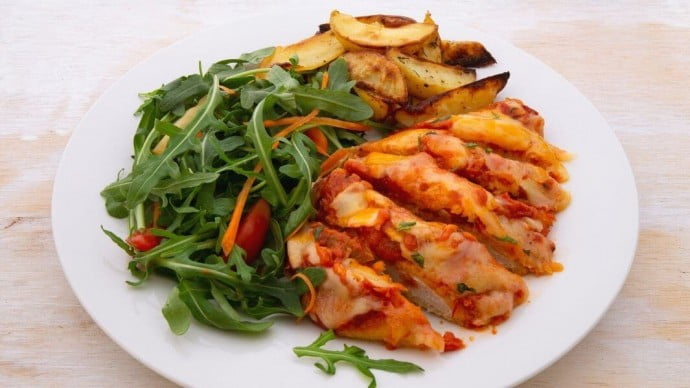
Would you keep your pasta and meat separate?
7. Italian Dressing
Now this one even has Italian in its name so it would surely be completely fair to assume that it came from Italy? Well sorry to disappoint, but Italian dressing is another American creation. Italians would never complicate a salad dressing as much as this by adding sugar, spices and the like. In fact, in Italy they often don’t really dress salads at all, and if they do it’ll likely be simply with a splash of olive oil.
Italian dressing was actually only created in the mid-20th century in North America. The daughter of two Italian immigrants decided to make large batches of her family’s salad dressing for her husband’s restaurant. Quickly it became hugely popular to the point where it was being bottled, and the name ‘Italian dressing’ was given to it purely because of her Italian heritage.

Olive oil is a quick and easy salad dressing!
8. Creamy Carbonara
Don’t worry we’re not going to shock you too much! Carbonara is of course from Italy and is still enjoyed across the country to this day. However, the incredibly creamy carbonara that we see in many British and American restaurants nowadays is certainly not Italian.
In Italy, the sauce is simply made by stirring egg and either parmesan or pecorino in with the pasta while it’s still hot. However, the past 20 years or so has seen double cream creep into some carbonara recipes; something which Italians wouldn’t be at all impressed by. In terms of the meat in a carbonara, strictly only pork cheek (guanciale) ought to be used by even in Italy pancetta will sometimes be used. What is however deemed to be completely unacceptable is the use of bacon in carbonara!
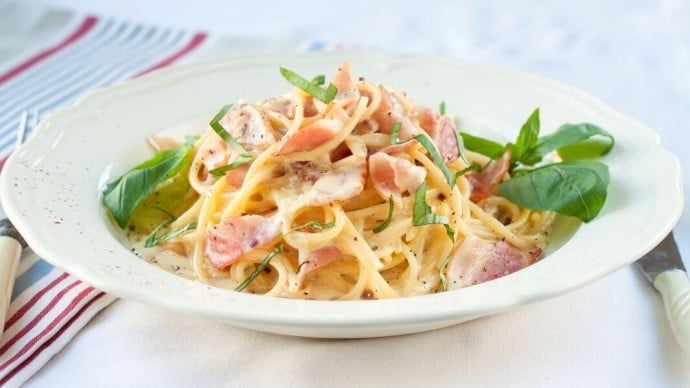
We are very sorry Italy! Can’t miss out on the bacon.
Do you want to learn more about real Italian dishes?
Why not get in touch to ask about our Italian cooking holidays where you have the ability to follow along a local Italian chef to cook the most authentic Italian dishes, not like the one’s above!
We teach our guests how to cook real Italian food with the help of a local Italian chef. If you’re looking for easy, delicious Italian meals to make at home, make sure to check out the recipes on our blog!
Comment below and let us know what ‘Italian dish’ surprised you the most out of this blog!




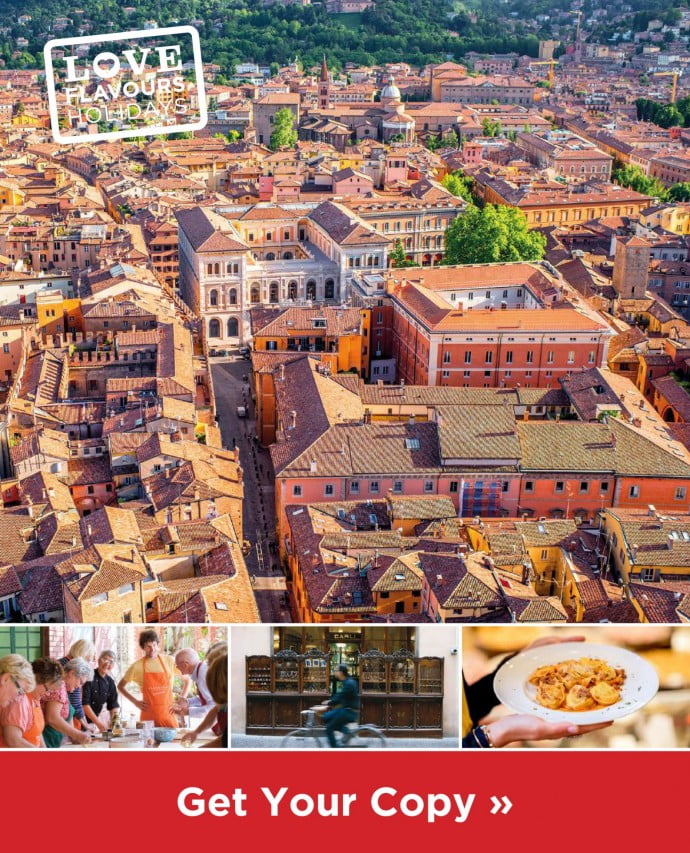
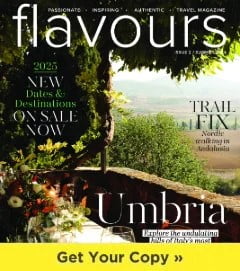


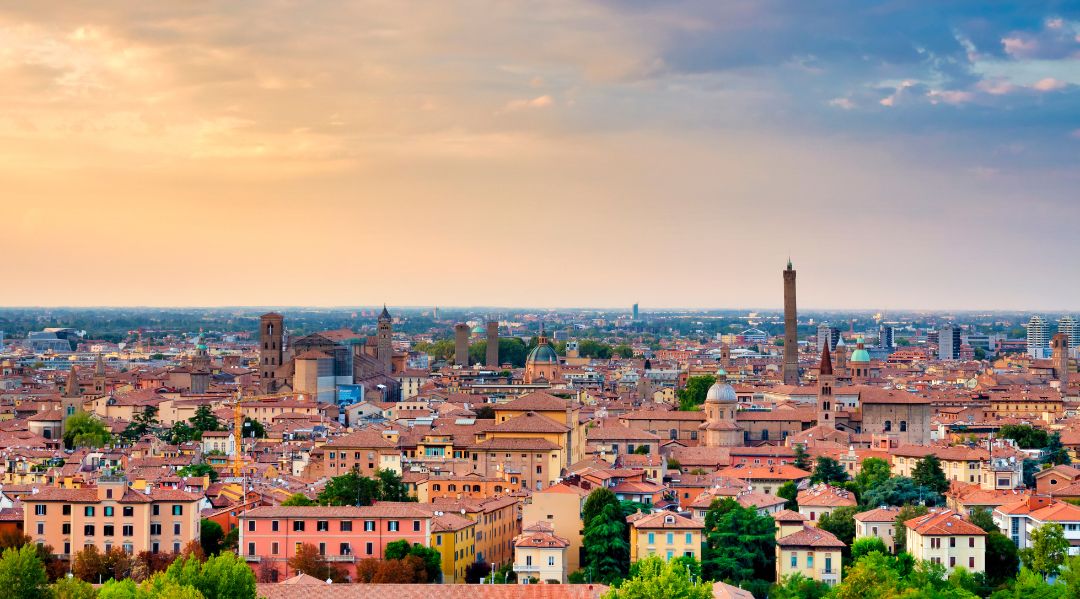
Most American versions of European dishes contain more sugar (in various forms), cream and fat than the originals. This reflects the fact that these were much cheaper in America and that immigrants did heavy labour and a quick fix of energy was attractive. Sadly this has resulted in the American taste being much sweeter, creamier and fattier (one writer calls this tastier) than in Europe, which in turn reflects the American obesity problem.
In other words italian American food is way better and more flavorful than italian nationals food. Thanks for pointing that out.
That’s as long as you never lived in Italy. Fact is that the Italian natural produce is so much more natural from permaculture farms that it would be a crime to try and make it taste better with unhealthy additives. The flavor will immediately make you get it. No one can describe it.
You missed Stromboli. It is American, not italian. If you go to any pizza place in most european countries or in Italy, they have no idea what a stromboli is.
Thank you for writing this! Fun!
Actually there are different recipes for pasta+meatballs throughout Southern Italy. American spaghetti and meatballs developed from the Calabrian version. It IS an Italian recipe, it’s just different from yours. Like American pizza or American carbonara are different from what you would eat in Naples or in Rome. Buon appetito!
Yes that is true only having lived in Calabria and all of Italy I can tell you that it is still considered peasant food. Nonas kitchen is always great but the savory dishes are found more in the middle of Italy.
Fun fact: Lasagna is also not Italian but from Ancient greece..
And Polenta (corn polenta that is) is also not Italian, but a recipe technically stolen from native Americans… many South Americans eat still eat “polenta” .. in Aruba/ Bonaire, Curaçao its called “funchi”
if you know your history then you know im not lying
Completely wrong. Lasagna originated in Italy during the Middle Ages. The oldest transcribed text about lasagna appears in 1282 in the Memoriali Bolognesi (“Bolognesi Memorials”), in which lasagna was mentioned in a poem transcribed by a Bolognese notary; while the first recorded recipe was set down in the early 14th-century Liber de Coquina (The Book of Cookery). Greeks make nothing of the sort.
Also, As it is known today, polenta derives from earlier forms of grain mush (known as puls or pulmentum in Latin) that were commonly eaten since Roman times. Before the introduction of corn from America in the 16th century, polenta was made from starchy ingredients like farro, chestnut flour, millet, spelt, and chickpeas.
Nice try though.
Actually it did originate from ancient Greece. Known as Laganon. 1st flat type of pasta. Greeks didn’t use tomato based sauce, which the Italians did, and then known as lasagna
Sure we can all cut and paste from Wikipedia.
Thank you, Jojo! Grew up eating polenta with a tomato meat sauce. My father hailed from Northern Italy where that was a staple!
Good information. Interesting about origins of pepperoni. Meatball and spagetti my favourite. Inspired to cook it this week. Thank you.